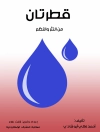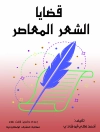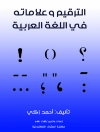This book elucidates the ways the pained and suffering body has been registered and mobilized in specifically Irish contexts across more than four hundred years of literature and culture. There is no singular approach to what pain means: the material addressed in this collection covers diverse cultural forms, from reports of battles and executions to stage and screen representations of sexual violence, produced in response to different historical circumstances in terms that confirm our understanding of how pain – whether endured or inflicted, witnessed or remediated – is culturally coded.
Pain is as open to ongoing redefinition as the Ireland that features in all of the essays gathered here. This collection offers new paradigms for understanding Ireland’s literary and cultural history.
Tabella dei contenuti
Introduction.- Introduction: The Body in Pain in Irish Literature and Culture; Fionnuala Dillane, Naomi Mc Areavey and Emilie Pine.- 1. Where Does It Hurt? How Pain Makes History in Early Modern Ireland; Patricia Palmer.- 2. ’Most barbarously and inhumaine maner butchered’: Masculinity, Trauma and Memory in Early Modern Ireland; Dianne Hall.- 3. ‘Those Savage Days of Memory’: John Temple and his Narrative of the 1641 Uprising; Sarah Covington.- 4. Severed Heads and Floggings: The Undermining of Oblivion in Ulster in the Aftermath of 1798; Guy Beiner.- 5. ‘Tá mé ag imeacht’: The Execution of Myles Joyce and its Afterlives; Margaret Kelleher.- 6. Pain, Trauma and Memory in the Irish War of Independence: Remembering and Contextualizing Irish Suffering; Ian Miller.- 7. Pain, Pleasure and Revolution: The Body in Roger Casement’s Writings; Michael G. Cronin.- 8. ‘Targets of Shame’: Negotiating the Irish Female Migrant Experience in Kathleen Nevin’s You’ll Never Go Back (1946) and Kate O’Brien’s Mary Lavelle (1936); Sinéad Wall.- 9. ‘Intertextual quotation’: Troubled Irish Bodies and Jewish Intertextual Memory in Colum Mc Cann’s ‘Cathal’s Lake’ and ‘Hunger Strike’; Alison Garden.- 10. The Vulnerable Body on Stage: Reading Interpersonal Violence in Rape as Metaphor; Lisa Fitzpatrick.- 11. Recovery and Forgetting: Haunting Remains in Northern Irish Culture; Shane Alcobia Murphy.- 12. ‘That’s not so comfortable for you, is it?’: The Spectre of Misogyny in The Fall; Caroline Magennis.- 13. ‘The Art of Grief’: Irish Women’s Poetry of Loss and Healing; Catriona Clutterbuck.- Bibliography.- Index.
Circa l’autore
Fionnuala Dillane is Lecturer in Victorian Literature at University College Dublin, Ireland. She is author of
Before George Eliot: Marian Evans in the Periodical Press, joint winner of the 2014 Robert and Vineta Colby Scholarly Book Prize.
Naomi Mc Areavey is Lecturer in Renaissance Literature at University College Dublin, Ireland. She has published widely on the 1641 rebellion, and her edition of
The Letters of the First Duchess of Ormonde is forthcoming.
Emilie Pine is Lecturer in Modern Drama at University College Dublin, Ireland. She is the author of
The Politics of Irish Memory (Palgrave, 2011), incoming Editor of the
Irish University Review, and founding Director of the Irish Memory Studies Network.












